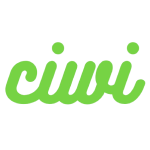Introduction
Building an independent website (or indie site) sounds exciting — the freedom, the control, the potential for passive income.
But not every idea is worth your time, effort, and investment. Many creators rush into building sites without validating their concepts, only to realize later that there’s no real demand or clear growth path.This article walks you through a practical framework for evaluating whether your independent website idea is viable, based on proven methods used by experienced online entrepreneurs and digital marketers.
Understand the Market and Audience Demand
The first question to ask is simple: does anyone actually care about what you’re building?Before you buy a domain or write your first post, do some quick market validation:
- Keyword Research: Use tools like Google Keyword Planner, Ahrefs, or Ubersuggest to check search volume and keyword difficulty.
- Social Listening: Explore Reddit, Quora, Facebook groups, or niche forums to see if people are talking about your topic.
- Trend Analysis: Use Google Trends to determine if interest is increasing or declining.
- Audience Feedback: Ask potential users what problems they’re facing — real conversations often reveal what data can’t.
💡 Tip: If you find no search activity, no community discussion, and no user interest, your topic might need a sharper focus or a different angle.
Analyze the Competition
Once you’ve confirmed there’s demand, analyze your competition.Search your target keywords and review the top-ranking websites:
- Are they large authority sites or small niche players?
- What kind of content and design are they using?
- How strong are their backlinks and domain authority?
- Are there visible weaknesses — outdated design, poor UX, or missing subtopics — that you could outperform?
If the niche is dominated by established brands, entry will be tough unless you offer something unique.
But if you see outdated content and low-quality competitors, that’s a strong green flag — an opportunity to stand out.
Clarify Your Value Proposition
Even if demand exists and competition is manageable, you still need a reason for users to choose your site.Ask yourself:
- What makes my approach different or better?
- Can I offer deeper insights, faster information, or a more focused experience?
- Is there a specific audience segment that existing sites overlook?
Your site must deliver clear value — whether through expertise, presentation, or personality — that visitors immediately recognize.
Evaluate the Cost vs. Revenue Model
Every website has costs — and they add up quickly.List your expenses, including:
- Domain and hosting
- Design and development
- Content creation (articles, images, videos)
- Marketing and advertising
- Maintenance and updates
Then estimate your revenue potential, such as:
- Affiliate marketing
- Product or service sales
- Sponsored posts or ads
- Memberships or digital courses
If your projected costs outweigh potential returns within 12–18 months, consider refining your concept or narrowing your focus.
Check Technical and SEO Feasibility
A good idea can fail due to poor performance or SEO setup.Ensure your foundation is technically sound:
- Site Speed & Mobile Optimization: Users won’t wait for slow pages, especially on mobile.
- SEO-Friendly Structure: Build a logical hierarchy with internal links and clean URLs.
- Security: Use HTTPS, backups, and reliable hosting.
- Scalability: Choose a CMS that can grow with your needs (e.g., WordPress, Shopify, Ghost).
🚀 Pro Tip: Before launch, test your site using Google PageSpeed Insights, Ahrefs Site Audit, or GTmetrix to fix major issues early.
Run a Small MVP Test
Before committing fully, launch a minimum viable product (MVP) — a simplified version of your idea.Examples:
- Publish 3–5 high-quality articles and monitor engagement.
- Run a small ad campaign to see if people click or convert.
- Offer a newsletter sign-up to test audience interest.
If your MVP attracts users, that’s validation. If not, you’ve saved yourself months of effort and expenses.
Measure Performance and Decide
Set short-term benchmarks for your first 3 months:
- Traffic and engagement metrics
- Bounce rate and time on site
- Email sign-ups or product inquiries
If results are promising, scale your efforts.If performance is weak, analyze whether the issue lies in the topic, content, or marketing — and pivot quickly.
Recognize the Red Flags
Sometimes, the smartest decision is to not move forward.Watch for these warning signs:
- No search or community interest in your niche
- Strong, established competitors dominate every keyword
- Monetization paths are unclear or unprofitable
- Poor traffic results even after consistent effort
- Overdependence on paid ads or one traffic channel
When multiple red flags appear, it’s better to pause, reassess, and redirect your resources.
Conclusion
Not every idea deserves a website — but every great website starts with a validated idea.A sustainable independent site is built on:
- Real audience demand
- Clear differentiation
- Sustainable monetization
Validate before you build. Test before you invest.Do that, and you’ll dramatically increase your chances of turning your idea into a successful, long-term online business.


